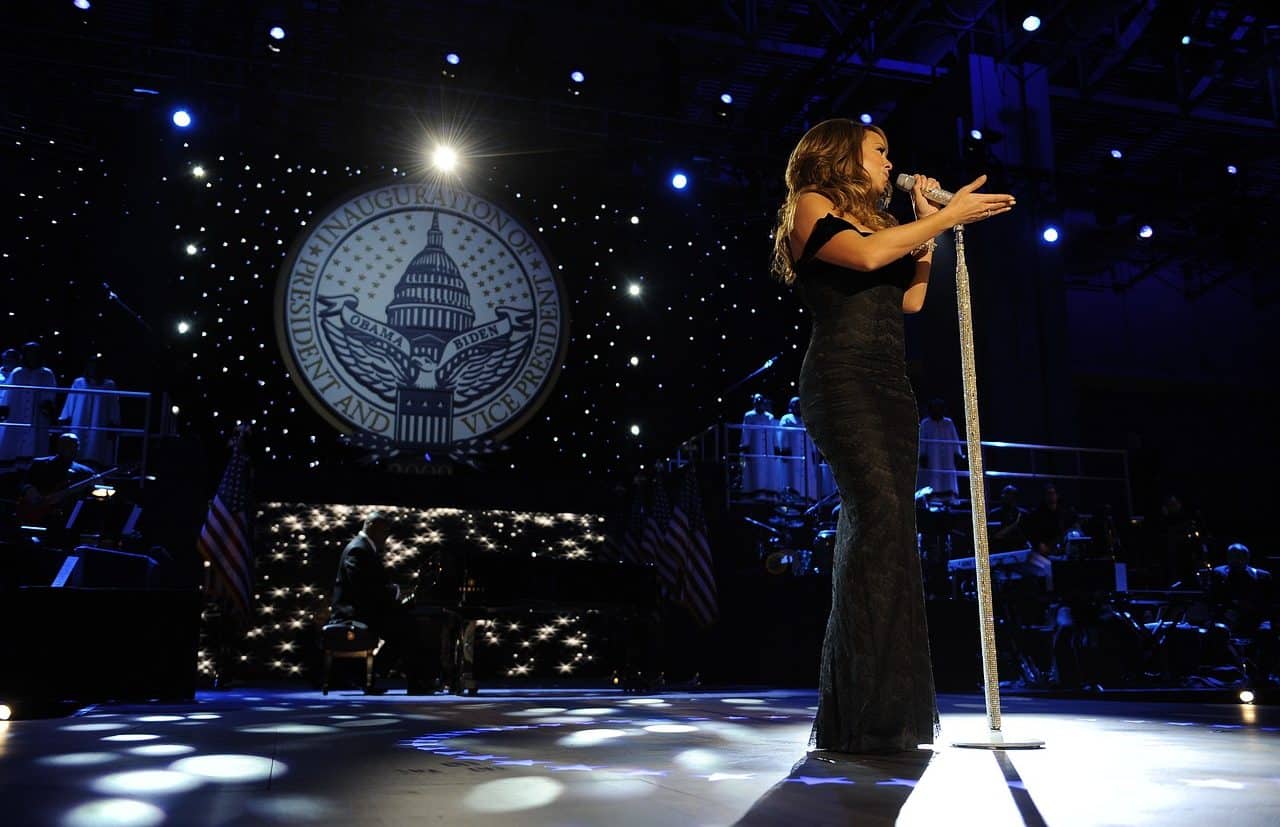
Mariah Carey is one of the most influential solo singers of our time.
A soloist , in the context of music, refers to a performer or musician who excels individually in a performance, in contrast to a musical ensemble or group. This person takes the lead role and performs the melodic or featured part of a composition , often accompanied by an orchestra providing instrumental support.
The importance of the soloist's role is significant and multifaceted for different reasons. For example, it allows a musician to display their skill, style, and personal expression more prominently. This allows listeners to connect more directly with the interpretation , since they can appreciate the uniqueness and technique of the person performing it.
Soloists are often responsible for conveying the emotion and depth of a composition. Their performances can be moving and emotional, adding a special dimension to the music . The inclusion of solos in a piece of music can vary the structure and sound, providing contrasts and avoiding monotony. This is especially evident in genres such as jazz, rock, blues and classical music, where these segments play a crucial role.
It is also common for soloists to receive recognition and admiration from their audience and peers. Their technical skills and creativity can inspire other musicians and fans, leading them to want to improve themselves to approach their level. Furthermore, soloists can adapt to a wide range of musical styles and contexts, demonstrating their versatility . They may perform individually in classical concerts, as session musicians on studio recordings, or as leaders of a rock band.
History and evolution
The soloist's story has deep roots dating back to the dawn of classical music. One of the most iconic formats that this figure has perpetuated is the concerto , especially that written for solo instrument and orchestra , which became popular in the baroque and classical eras. Composers such as Antonio Vivaldi and Wolfgang Amadeus Mozart contributed significantly to this musical form, creating masterpieces for instruments such as the violin and piano.
Over time, the evolution of the soloist has been closely linked to the diversification of music . The rise of musical genres such as jazz, rock, pop and hip-hop has led to an expansion in the variety of soloists and musical styles. Iconic musicians such as Patti Labelle, Jimi Hendrix, Aretha Franklin, Eric Clapton, Barbra Streisand and Freddie Mercury became symbols of individuality and musical expression in their respective genres.
Today, soloists continue to play a vital role in live music. His recitals , which often include orchestral accompaniment , are highly anticipated events that allow listeners to experience his skill and passion in their purest form. The artistic evolution of the soloists is evident in their ability to encompass diverse musical genres and fuse styles, allowing them to remain relevant in an ever-changing industry.
Types of soloists
There are various types of soloists, each with their own distinctive characteristics. Guitarists are often noted for their virtuosity in performing electric guitar solos in genres such as rock and metal , creating amazing melodies and harmonies. Pianists , on the other hand, are known for their ability to perform classical and contemporary pieces with impressive technical skill.
Violinists , in the context of classical music, are revered for their ability to express deep emotions and convey the beauty of the masterpieces of composers such as Johann Sebastian Bach . Vocalists hold a special place in genres that rely heavily on vocals, such as pop and R&B , and have the responsibility of delivering emotional and melodic lyrics with a distinctive voice.

The training of soloists is usually very intense and extensive, to achieve technical and interpretive excellence.
Preparation and training
The preparation and training of a soloist is a process that requires years of dedication and hard work. These musicians usually begin their training from an early age, learning the fundamentals of music theory and instrumental technique . Pianists and violinists, for example, spend hours honing their ability to perform complicated scores, while guitarists may focus on improvisation and creativity.
Solo vocalists, meanwhile, work on their vocal control and expressiveness, and may receive training to develop their range and quality. Collaboration with conductors and composers is essential to learning to perform works authentically and expressively.
Training also includes adaptation to different musical genres , which may require the exploration of specific techniques and styles. Soloists often collaborate with accompanying musicians, such as choirs or bands , to perfect their sound and performance. Repertoire preparation, sound check, rehearsals and the live performance routine are crucial elements in the training process.
The recording industry and the soloist
The recording industry has had a significant impact on the careers of solo artists, who often record albums and singles that are distributed by record labels. Visual production , which includes the creation of stunning video clips, has become an essential component of promoting music and reaching a global audience .
Radio promotion and participation in talent shows and festivals are also key strategies for soloists to achieve fame and recognition. As their career progresses, they can earn platinum or gold certifications based on their album sales, reflecting their impact on the industry and the love of their fans.
The most successful soloists have a strong personal brand that sets them apart and an artistic trajectory that evolves over time. His ability to stay at the top of the charts, radio and streaming platforms is a testament to his influence in the recording industry.

Each soloist usually has one or more distinctive features in his or her way of interpreting music and addressing the audience.
famous soloists
Throughout music history, there have been famous soloists who have left an indelible mark on the industry and in the hearts of their fans. Let's look at some of them below:
- Mariah Carey , an iconic American singer and songwriter who has forever changed contemporary music as a solo artist. Her impressive vocal range, songwriting prowess, and ability to fuse musical genres have made her one of the most successful and influential artists of all time;
- Freddie Mercury , the iconic vocalist of Queen, captivated audiences with his powerful voice and charisma on stage , becoming a rock legend;
- Beyoncé , known for her vocal versatility and energetic performances, has established herself as one of the most influential artists in pop and R&B music;
- Martha Argerich , a renowned Argentine pianist who has captivated the world with her virtuosity as a soloist. Her mastery of the piano and her passionate interpretation of classical works have made her an iconic figure in the world of classical music;
- Lang Lang , a prodigious pianist who has impressed the world with his technical prowess on classical piano and attracted a global audience with his charisma. He stands out for participating in productions of various genres, without being trapped in academic music.
